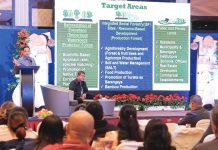ILOILO City – Teacher shortage in Western Visayas is forcing educators to teach subjects far from their areas of expertise, raising alarm over declining instruction quality and the growing toll on teachers already burdened by multiple workloads.
In some public schools, math teachers are teaching Media Arts, English teachers are handling MAPEH (Music, Arts, Physical Education, and Health), and Filipino majors are assigned to teach Araling Panlipunan (Social Studies) or Edukasyon sa Pagpapakatao (Values Education) — all because there are not enough qualified instructors to fill vacant posts.
“I am a math major, pero ga-teach ako Media Arts,” shared “Jude,” a 27-year-old secondary school teacher from Capiz. He asked not to be named as he had no clearance to speak from his superiors.
“There’s no available teacher who can teach the subject. I was assigned to this subject even if it’s not my major since they believe I know how to make pubmats, video editing, tarpaulins,” he added.
Data from the Department of Education (DepEd) Western Visayas show that as of September 19, 2025, the region has 53,081 filled teaching positions but still lacks 3,272 more — vacancies currently under hiring processes supervised by the Department of Budget and Management (DBM).
Overworked and Out of Depth
Jude admitted he struggles with subjects outside his training, often studying lessons on his own to keep up.
“This is added work. I need to study the subject and look for references since there’s no available references as well in the school,” he said.
He lamented that mismatched assignments have a “domino effect” on student learning.
“The reality is lack sang MAPEH teacher so English teacher ang gin-assign to teach. So what do you expect? It will have a domino effect later on in the learning of students, especially if their teacher is not adept in the subject area,” he stressed.
Jude also pointed out that teachers cannot refuse assignments.
“If you’re a classroom teacher, people expect that you know everything. We can’t say ‘no’ because if you won’t accept the load, you will be categorized as ‘underloaded’. So whether you like it or not, you have to teach,” he added.
Mismatch Spreads Across Schools
“Remy”, a 28-year-old Filipino major from Roxas City, faces a similar situation.
“Ga-teach ako Edukasyon sa Pagpapakatao kag Araling Panlipunan. Hindi maganda magkaroon ng specialization mismatch but may teacher shortage. Sana mayroong right teacher na available for the needed subject,” she emphasized, calling on authorities to correctly fill vacancies so teachers can teach within their specialization.
Meanwhile, “Rose,” a 32-year-old math teacher from Iloilo, also handles Values Education due to staff shortages.
“Okay lang man sa akon ang mag-teach kag mag sunod sa school system, pero mangita ka pa sang mga resources kay wala ako resources or references. Malupos siya itudlo kaso wala lang references,” she said.
Systemic Problem, Systemic Impact
Experts say teacher mismatches, while a temporary solution, erode instructional quality and teacher morale. With over 3,000 teaching positions still unfilled in the region, the education system’s strain is becoming evident.
“Sometimes, students are complaining. They feel not being taught the right lessons,” said Jude.
Last year, the Schools Division of Iloilo insisted there was no teacher-subject mismatch in the province. The clarification comes from Schools Division Superintendent Ernesto Servillon Jr., following inquiries prompted by national reports indicating a significant mismatch across the country. According to those reports, over 62 percent of high school teachers in public schools nationwide were assigned to teach subjects they did not major in due to budget constraints limiting specialized hiring.
Servillon highlighted that, under his leadership, the local division strictly matched teacher hires to the specific learning needs of schools.
“When we hire, we prioritize the learning needs of our schools and learners,” Servillon explained.
Servillon added that the primary criteria for hiring secondary school teachers involved addressing the school’s specific learning area needs and prioritizing local candidates. This approach minimized the risk of mismatches that could hinder both teaching and learning processes, he stressed.
Servillon acknowledged rare, isolated cases where, for example, a math teacher might temporarily cover an English class due to unforeseen circumstances like absenteeism. However, these instances were strictly temporary, ensuring that learning continues uninterrupted, he clarified.
‘Super body’ to tackle mismatch
President Ferdinand Marcos Jr. organized two months ago a “super body” to tackle the mismatch between the needs of the education sector and the demands of the labor industry.
The President, on Aug. 13, signed Administrative Order (AO) No. 36, establishing the Education and Workforce Development Group (EWDG) as the central coordinating body on all matters related to education and workforce development.
The order “is necessary to… address longstanding concerns in the education sector and foster a complete, adequate, and integrated education system in the country,” AO 36 read in part.
This is apart from the Enterprise-Based Education and Training Framework Act, which Marcos signed into law in November last year to also address the critical issue of underemployment.
The EWDG is headed by the President as chair, the secretary of the Department of Education (DepEd) as co-chair and the secretary of the Department of Labor and Employment (Dole) as vice co-chair.
It has as members the heads of the Commission on Higher Education; Department of Migrant Workers; Department of Economy, Planning, and Development; and Technical Education and Skills Development Authority.
The EWDG’s main task is to formulate a National Education and Workforce Development Plan (NEWDP) spanning 10 years or way beyond Mr. Marcos’ term.
This plan will guide concerned government agencies in formulating and implementing strategies “to align the country’s education and workforce systems with the rapidly evolving demands of the global economy.”
The NEWDP will address the long-standing challenges confronting the education sector — encompassing childhood education, basic education, higher education and vocational skills training./PN





